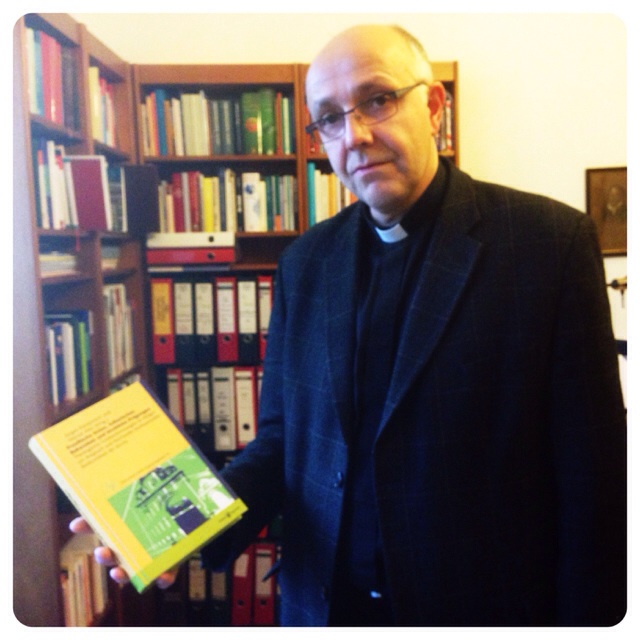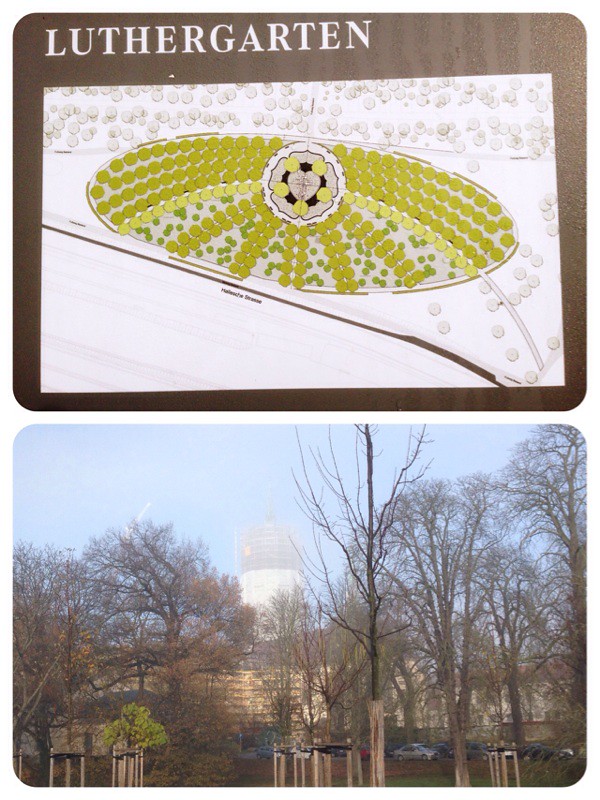
Pictured: (back row) Rev. Arthur Rickman, Rev. Daniel McMiller, Rev. Ted Krey, Rev. Dr. Scott Murray, Rev. Dr. Timothy Quill; (front row) Rev. Dr. Lawrence Rast, Maria De Lourdes, President Alvaro Lopez Fajardo, Rev. Samuel Peréz.
Representatives of the Missouri Synod met with representatives from the Lutheran Synod of Mexico (SLM) on 16 December 2013 in Mexico City, Mexico. In the early 1980s, the LCMS largely withdrew work in Mexico. On 29 September 2013, the SLM sent a letter to President Harrison asking the Missouri Synod to resume and increase its partnership. The LCMS responded by sending Rev. Arthur Rickman to meet with church officials.
In the meetings SLM officials explained the challenges faced both in Mexico and in the Synod. Currently, the SLM has three ordained pastors. The SLM expressed a need for theological education leading to ordained pastors. They also expressed a need for increasing Lutheran identity, and the deacons and deaconesses. Dr. Scott Murray, 4th Vice President of the LCMS who attended the discussions, said of the meeting between SLM and the LCMS, "It was delightful to renew relationships that had gone fallow and to encourage a church body that felt orphaned. We discussed concrete action items for the future that were mutually agreed to. Through these opportunities we look forward to rebuilding our relationship as we walk together in the body of Christ."

In cooperation with the Luther Academy, the LCMS sponsored a conference for SLM pastors and laity. Rev. Roberto Bustamante from Concordia Seminary in Buenos Aries, Argentina, was the lecturer. His lectures are focusing on Lutheran identity and the theology of the cross.

The conference was held at the Lutheran Center of Mexico City. The Lutheran Center was built in the 1960s largely through the work of the Missouri Synod. As a result of the agreement, the Missouri Synod has a place at the table to discuss how the facility is used to promote Lutheranism in Mexico and Central America.
We look forward to the future of a closer partnership between the SLM and the Missouri Synod.
The SLM is in altar and pulpit fellowship with the Missouri Synod and a member of the International Lutheran Council (ILC).
- Posted by Dr. Albert Collver, Director of Church Relations and Executive Secretary of the ILC using BlogPress from my iPhone


















































